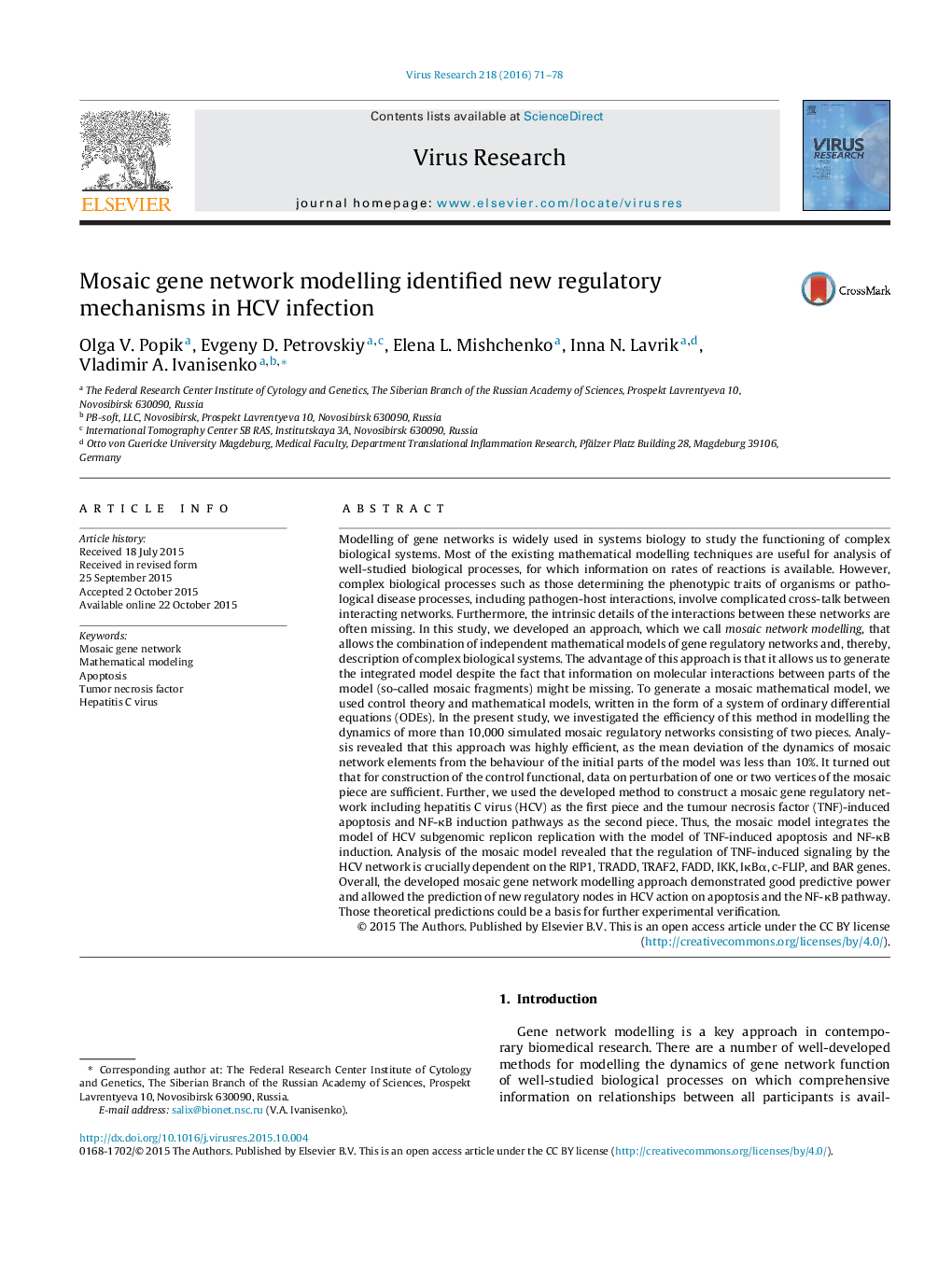| Article ID | Journal | Published Year | Pages | File Type |
|---|---|---|---|---|
| 6142113 | Virus Research | 2016 | 8 Pages |
â¢Mosaic networks include two or more interacting biological processes.â¢A method for modelling mosaic networks was developed.â¢The method had good predictability power for simulated gene regulatory networks.â¢Mosaic model of HCV and TNF-induced apoptosis vs NF-κB regulation was constructed.â¢Model allowed to identify key nodes in the regulation of apoptosis and NF-κB by HCV.
Modelling of gene networks is widely used in systems biology to study the functioning of complex biological systems. Most of the existing mathematical modelling techniques are useful for analysis of well-studied biological processes, for which information on rates of reactions is available. However, complex biological processes such as those determining the phenotypic traits of organisms or pathological disease processes, including pathogen-host interactions, involve complicated cross-talk between interacting networks. Furthermore, the intrinsic details of the interactions between these networks are often missing. In this study, we developed an approach, which we call mosaic network modelling, that allows the combination of independent mathematical models of gene regulatory networks and, thereby, description of complex biological systems. The advantage of this approach is that it allows us to generate the integrated model despite the fact that information on molecular interactions between parts of the model (so-called mosaic fragments) might be missing. To generate a mosaic mathematical model, we used control theory and mathematical models, written in the form of a system of ordinary differential equations (ODEs). In the present study, we investigated the efficiency of this method in modelling the dynamics of more than 10,000 simulated mosaic regulatory networks consisting of two pieces. Analysis revealed that this approach was highly efficient, as the mean deviation of the dynamics of mosaic network elements from the behaviour of the initial parts of the model was less than 10%. It turned out that for construction of the control functional, data on perturbation of one or two vertices of the mosaic piece are sufficient. Further, we used the developed method to construct a mosaic gene regulatory network including hepatitis C virus (HCV) as the first piece and the tumour necrosis factor (TNF)-induced apoptosis and NF-κB induction pathways as the second piece. Thus, the mosaic model integrates the model of HCV subgenomic replicon replication with the model of TNF-induced apoptosis and NF-κB induction. Analysis of the mosaic model revealed that the regulation of TNF-induced signaling by the HCV network is crucially dependent on the RIP1, TRADD, TRAF2, FADD, IKK, IκBα, c-FLIP, and BAR genes. Overall, the developed mosaic gene network modelling approach demonstrated good predictive power and allowed the prediction of new regulatory nodes in HCV action on apoptosis and the NF-κB pathway. Those theoretical predictions could be a basis for further experimental verification.
